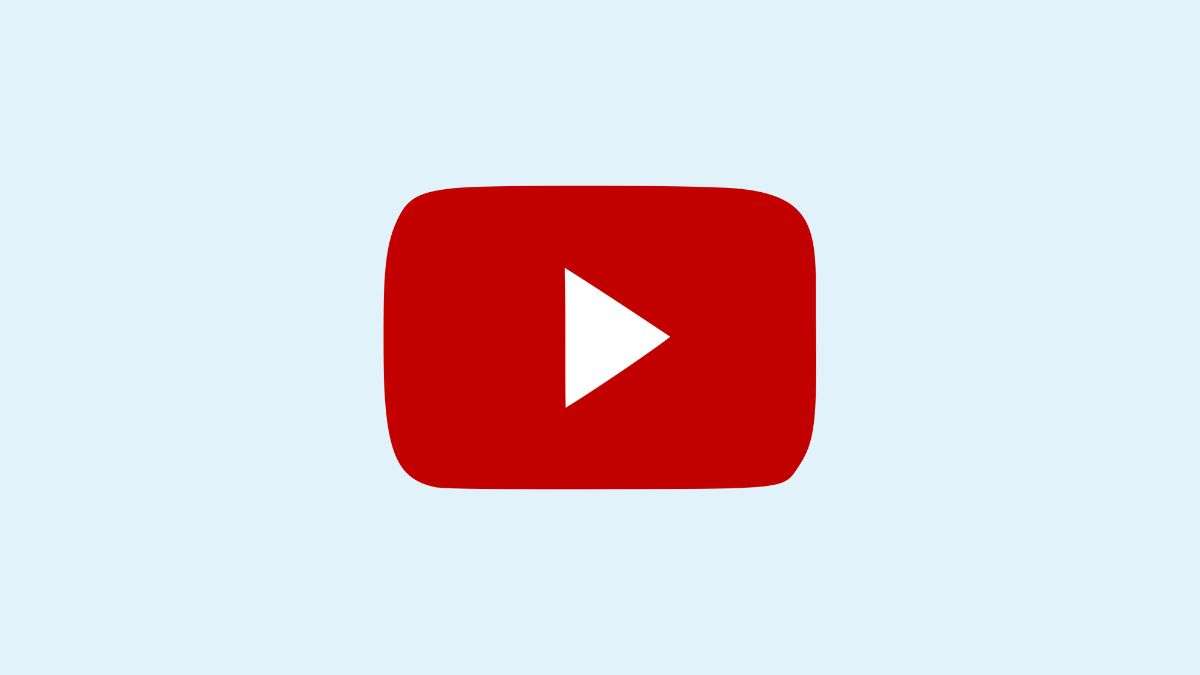Table of Contents
- Introduction
- The Rise of Online Video Content
- Assessing How YouTube Transformed Publishing
- Evolution of Content Creation and Distribution
- Adapting to the YouTube Effect
- Conclusion
Introduction
The write-up delves into how YouTube transformed publishing. Since its launch in 2005, this online video platform has fundamentally changed how people consume content and upended traditional publishing models. As online video consumption has skyrocketed, led by YouTube, publishers have faced major disruptions and new opportunities.
YouTube has redefined the content landscape. Before it existed, text and images dominated online content. But YouTube made video king—and in the process, disrupted entrenched publishing models oriented around print media. Suddenly, audiences were turning to amateur video creators rather than established publishers. For publishers, this created an existential crisis and a chance to reach new audiences through a radically different medium.
The growth of online video has been astronomical. Over one billion hours of YouTube videos are watched daily. This surge toward online video creates enormous challenges for traditional publishers focused on newspapers and magazines. Readership of print has declined sharply, while video has become the medium of choice for billions globally. Publishers must adapt quickly to video to engage modern audiences. Many are still struggling to make this pivot—but the influence of online video consumption on publishing cannot be overstated.
The Rise of Online Video Content
The popularity of online video platforms like YouTube has surged in recent years. Platforms like YouTube and Facebook have capitalized on this trend, providing users easy access to consuming, creating, and sharing video content.
This shift towards online video has significantly impacted content consumption habits. While text-based content like newspapers, magazines, and books once dominated, videos now account for much of the content people view online.
The History of YouTube
The history of YouTube began in early 2005 when three former PayPal employees—Chad Hurley, Steve Chen, and Jawed Karim—created a platform for sharing videos online. The idea was born from the founders’ difficulties sharing videos at dinner parties. The first video, titled “Me at the Zoo,” was uploaded by Karim on April 23, 2005, marking the official launch of what would become the world’s largest video-sharing website.
YouTube quickly gained popularity as users appreciated the ease with which they could upload, share, and view videos. The platform stood out for its user-friendly interface and the variety of content it hosted, from amateur home videos to clips from television shows and music videos.
Seeing the potential of YouTube, Google acquired the platform in November 2006 for around $1.65 billion in stock. This acquisition catapulted YouTube’s growth further, integrating it with Google’s advertising systems and expanding its global reach.
Since its acquisition, YouTube has introduced various features to enhance user experience and content creation, including HD video support, live streaming, and a partner program that allows creators to monetize their content. The site has also been home to viral phenomena and has served as a launchpad for numerous content creators who have built careers on the platform.
Over the years, YouTube has expanded its content offerings to include educational videos, 360-degree videos, YouTube Originals for premium content, YouTube Music, and YouTube TV for live TV streaming. The platform has continued to grow and evolve, adapting to users’ changing viewing habits and remaining at the forefront of the online video revolution.
Key milestones include:
- By 2010, YouTube exceeded 2 billion views per day
- In 2013, YouTube reported over 1 billion unique monthly visitors
- In 2015, over 400 hours of new video content was uploaded to YouTube every minute
- Today, YouTube reaches over 2 billion logged-in monthly users worldwide
This tremendous growth demonstrates how popular online video platforms like YouTube have become globally. As technology continues to advance, the consumption of online video is expected to keep rising.
The popularity of online video has fueled a significant shift from text-based content to video. Some critical implications of this change for publishers include:
- Attention spans for online content are declining, with videos often better at keeping audiences engaged.
- Video requires new multimedia production skills that traditional text-focused publishers may lack.
- Advertising and sponsorship opportunities differ significantly between text and video.
- Distributing on closed platforms like YouTube poses risks, as publishers cede control and directly own less content.
For publishers accustomed to text-based content, these industry changes present new hurdles. Adapting business models, developing new capabilities, and embracing video-centric and multimedia storytelling appear crucial for continued relevance and financial viability.
Assessing How YouTube Transformed Publishing
The rise of YouTube and online video has significantly disrupted traditional publishing models that relied predominantly on print media. As video consumption continues to surge, publishers face dwindling readership of magazines and newspapers. Ad revenues have also taken a hit as marketers shift budgets to online video platforms. This monumental shift is forcing publishers to re-evaluate their content and distribution strategies.
YouTube has fundamentally changed how people discover and consume content. According to a Nielsen report, adults in the US spend over 11 hours per week watching online videos compared to 5 hours per week reading magazines and newspapers. Easy access to free video content on YouTube has led audiences to spend less time with traditional print publications.
Additionally, falling print circulation and subscriptions have severely impacted revenues for magazine and newspaper publishers. The loss of readers translates into a loss of advertisers who now prefer online video platforms’ expanded reach and engagement.
The key challenges faced by publishers in the YouTube era include:
- Competing for audience attention and engagement
- Monetizing content and stabilizing declining revenues
- Adapting print-centric workflows to multimedia production
However, opportunities also abound for innovative publishers willing to evolve. These include:
- Tapping into the burgeoning demand for online video
- Leveraging influencer marketing via YouTube creators
- Exploring innovative video monetization models
- Building multimedia storytelling capabilities
The winners will be those publishers who embrace online video early on as an integral part of their content strategy rather than treating it as an add-on. Developing video production expertise, investing in digital platforms, and collaborating with YouTube creators offer pathways to future success.
Evolution of Content Creation and Distribution
The rise of YouTube and online video platforms has fundamentally shifted how content is created and distributed. Where once publishers relied on a centralized, top-down model of content creation by professionals, online video has opened the floodgates to user-generated content created by regular people. YouTube enabled anyone with a camera and internet connection to become a publisher, democratizing media creation.
User-generated Content and Democratization of Publishing
YouTube unleashed a wave of user-generated video content. Whereas publishing was once restricted to major media companies, now amateur videographers create popular content watched by millions. Regular people have found fame and fortune through YouTube self-publishing, from makeup tutorials to gaming streams to viral video bloggers.
This user-generated content explosion challenged traditional publishers’ monopoly over media creation. YouTube provided the tools and platform for distributing content without a publishing middleman. The barriers to entry were drastically lowered, reducing the gatekeeper role publishers traditionally occupied.
Implications for Professional Publishers
For professional publishers, these shifts required drastic changes to their content strategies. As online video surged in popularity, particularly with younger demographics, publishers had to expand beyond purely text-based content. Integrating multimedia was vital—from podcasts to social videos to long-form YouTube documentaries.
Publishers also had to cede some control over distribution by allowing user sharing across platforms. Whereas publishers once controlled each stage from creation to distribution, user-driven sharing now plays a significant role in content dissemination.

Overall, publishers have had to embrace more collaborative multimedia production workflows to produce content optimized for consumption in an online video world.
Adapting to the YouTube Effect
As online video transforms content consumption and publishing models, traditional publishers must adapt their strategies to leverage this medium. Rather than viewing YouTube and online video platforms as a threat, publishers can embrace them as an opportunity to expand their audience, diversify storytelling formats, and participate in emerging content ecosystems.
Integrate Online Video into Content Strategies
Publishers should incorporate online video content as a core strategy rather than an afterthought. This includes:
- Producing supplementary video content to complement existing text-based stories
- Optimizing written content for discoverability on video platforms
- Leveraging interactive multimedia formats like explainers, interviews, and demos
- Repurposing existing content libraries into snackable videos
The key is meeting audiences where they already spend time—on YouTube and social video apps—instead of only drawing them back to proprietary websites.
Embrace Multimedia Storytelling
Online video has expanded the creative canvas for publishers to tell stories. By combining video, images, graphics, text, and interactive elements, publishers can produce engaging multimedia narratives tailored to digital environments. Some storytelling formats to experiment with include:
- Short documentaries and mini-series expanding on reported stories.
- Animated explainers distilling complex topics into easily digestible videos.
- Personality-driven video blogs offering commentary and analysis.
- Behind-the-scenes footage giving audiences insider access.
The beauty of multimedia is the ability to showcase visuals that text alone cannot and leverage video’s intimacy and personality. Publishers that master these formats will connect with audiences in more memorable ways.
Build Video-Centric Audiences
With video at the forefront, publishers must engage audiences attuned to video-first content experiences. This requires:
- Optimizing video content for distribution across social platforms like YouTube, TikTok and Instagram
- Analyzing video performance data to inform content development and promotion decisions
- Cultivating authentic creator voices that resonate with video-centric viewers
- Implementing best practices for video monetization via advertising, subscriptions, events, and more
Publishers can translate their expertise into sustainable video offerings by understanding video ecosystems’ unique norms and economics.
Conclusion
We have delved into how YouTube transformed publishing and the impact video platforms bring. As we have explored, the popularity of video content and the shift in consumption habits toward online video have disrupted traditional, text-based publishing models.
Publishers now face both daunting challenges and exciting opportunities. On the one hand, they must adapt their content strategies and embrace multimedia storytelling to engage with increasingly video-centric audiences. However, the democratization of publishing also opens up new avenues for publishers to reach and connect with audiences and monetize their content.
To succeed in this new landscape, publishers should consider introducing supplementary video content to complement their existing text-based stories. This can involve creating short documentaries, animated explainers, personality-driven video blogs, or behind-the-scenes footage that provide a different perspective or enhance the storytelling experience.
Additionally, leveraging interactive multimedia formats like explainers, interviews, and demos can further engage viewers and enhance their overall experience. By repurposing existing content libraries into snackable videos, publishers can make their content more accessible and appealing to audiences who prefer video formats.
Publishers need to meet audiences where they already spend time, such as on YouTube and social video apps, rather than solely drawing them back to proprietary websites. Publishers can effectively reach and connect with video-centric viewers by embracing multimedia storytelling and optimizing video content for distribution across various platforms.
Furthermore, analyzing video performance data can help inform content development and promotion decisions, allowing publishers to refine their strategies and cater to the preferences of their audience. Cultivating authentic creator voices that resonate with video-centric viewers is essential for building video-centric audiences.
Finally, publishers should implement best practices for video monetization, such as advertising, subscriptions, and events, to ensure the sustainability of their video offerings.
In conclusion, the rise of online video has disrupted traditional publishing models, but it also presents exciting opportunities for publishers to engage with video-centric audiences. Publishers can thrive in this evolving landscape by adapting content strategies, embracing multimedia storytelling, and optimizing video content for various platforms.
